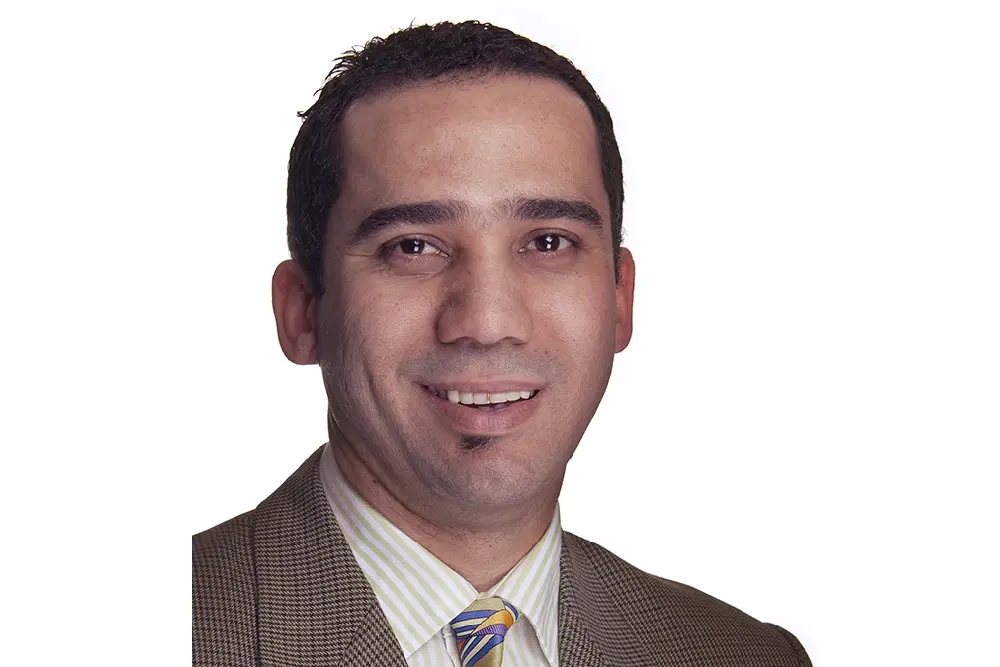The New Testament was written to hearing communities of Christ-followers across the Mediterranean, a world where the masses were largely poor, uneducated and illiterate.1 Life was slow, hard and short.2 Reflecting the larger population, the majority of the early Christians were illiterate.
So the New Testament writings were largely heard in community, in worship and were read by a lector to the listening congregation.3 For example, Jesus served as lector when He read the Isaiah scroll in Luke 4:16. To illustrate the hearing dynamics in the New Testament, we will examine the Gospel of Mark.
A biblical injunction
Hearing was an important part of the dynamics for an ancient audience.4 The concept of hearing can be seen in the use of the verb akouó—hear, heed and understand—which is used on more than 400 occasions in the New Testament.5 It is used to denote understanding of the Christian faith (see Galatians 3:2,3). Jesus’ whole teaching was delivered orally and preserved orally in the first few decades after His death.6 Jesus repeated “You heard that it was said to the men of old . . .” (see Matthew 5:21, onwards), reflecting the actual reality of His day in that Jews heard the Old Testament read to them in the synagogue.
Paul reminds the recipients of the letter to the Romans that “faith comes from hearing and hearing from the word of God” (Romans 10:17). In 1 Thessalonians 5:27, Paul states, “I charge you before the Lord to have this letter read to all the brothers.” The fact that this letter is addressed to “the church of the Thessalonians” (1:1)—and that the “you” referred to in 1:2-4, and following is plural—suggests that Paul intended this letter to be read aloud to the entire congregation. In fact, he commands that this happen.
The letter to the Colossians was also intended by Paul to be read aloud “to the holy and faithful brothers in Christ at Colossae” (Colossians 1:2), as again the plural “you” in 1:3–5 and beyond indicates. In Colossians 4:16, Paul furthermore commands, “After this letter has been read to you, see that it is also read in the church of the Laodiceans and that you in turn read the letter from Laodicea.” The early Christian communities were listening congregations. As they gathered to listen to the Word of God, the Holy Spirit was present in a mighty way to bless, strengthen and convict them in their walk with God (see John 14:15; Ephesians 5:18–20).
Hearing the gospel of Mark
The Gospel of Mark has interesting aural features. Louise Lawrence points out that forms of the verb akouó occur 40 times in Mark’s Gospel.7 Mark usually states that Jesus’ deeds are frequently “heard” by others (see Mark 2:1; 3:8, 21; 5:27; 6:14, 55; 7:25; 10:47); Jesus beckons people to “listen” to His teachings (see Mark 4:3; 6:2; 7:14). God petitions people to “listen” to His beloved Son (see Mark 9:7) and the most important commandment to Israel, which Jesus reiterated in His teaching, was: “Hear Israel . . . !” (Mark 12:29).8
The centrality of hearing is found in its use at the beginning and end of the parable of the sower (Mark 4:9, 23). The parable introduces four kinds of hearers: wayside hearers (Mark 4:15); persecuted hearers (Mark 4:17); worldly hearers (Mark 4:19); and finally obedient hearers (Mark 4:20). Hearing is the primary means by which people encounter the seed of the Word (see Mark 4:15). It is only obedient hearers who hear the Word, keep it and bear an astounding harvest as a result.9
Mark urges his audience to “hear”, for in hearing they will understand that the kingdom of God has broken into history in the Person and ministry of Jesus. The phenomenal harvest recorded in the parable (see Mark 4:20) alerts hearers to the fact that God is at work—hidden and unobserved—in Jesus. The definitive criteria for understanding the kingdom is to be an obedient hearer. The organ of the ear functions in Mark as a metaphor for spiritual cognition.10
Another way in which hearing is highlighted in this gospel is the way in which the deaf man is healed in Mark 7:31–37:
Then Jesus left the vicinity of Tyre and went through Sidon, down to the Sea of Galilee and into the region of the Decapolis. There, some people brought to him a man who was deaf and could hardly talk, and they begged Jesus to place his hand on him. After he took him aside, away from the crowd, Jesus put his fingers into the man’s ears. Then he spit and touched the man’s tongue. He looked up to heaven and with a deep sigh said to him, “Ephphatha!”(which means “Be opened!”). At this, the man’s ears were opened, his tongue was loosened and he began to speak plainly. Jesus commanded them not to tell anyone. But the more he did so, the more they kept talking about it. People were overwhelmed with amazement. “He has done everything well,” they said. “He even makes the deaf hear and the mute speak.”
Jesus takes a strange route to get to the region of the Decapolis. He goes out of the way, taking an unexplained detour. The journey does not make sense. He needed to get away from the people who focused on the miracles over the message. So He went to the region of the Decapolis—the 10 cities—an area that was so “Gentile” it was known as the “Rome away from Rome”.11 Jesus took this long winding trip to perfectly time His rendezvous with this deaf-and-mute man! [pullquote]
The deaf man would have been stigmatised and given no social agency. Eugene Boring states that in an oral-aural culture, the inability to hear was more serious and isolating than in “a visually oriented modern culture like our own”.12 Furthermore, “deafness was often understood by the ancients more in terms of intellectual rather than sensory impairment, deaf persons were assumed incapable of bearing legal responsibility and [were as such] politically marginalised”.13 Robert Gundry contends that “the whole man is concentrated in his ears, and to heal a deaf mute is so stupendous that claimed instances are extremely rare in antiquity”.14
Jesus places His fingers in the man’s ears, spits and then touches his tongue (see Mark 7:33). Immediately the man is healed from his deafness and muteness. The crowds exclaim that Jesus does all things well (see Mark 7:37). Nobody is excluded from the healing touch of God. This man is doubly afflicted: as a foreigner, he suffers isolation and he is also excluded by his physical impairment. Jesus does not heal from a distance, but rather comes close and personal.
This miracle is an allusion to Isaiah 35 where Yahweh heals the blind, the Deaf and the lame.15 Jesus now carries out the functions of Yahweh by healing this man. The phrase “he has done all things well” probably also echoes Genesis 1:31, which is a statement about the goodness of God’s work in creation. Jesus’ action initiates a new age. Hearing is a divine gift that ushers in the new creation.16
Hearing to grow
Hearing was fundamental to the early Christian understanding of the Old Testament. The stories of the Old Testament were a lived reality of what God had done in the past and now in the present in Jesus the Messiah. Hearing was fundamental to understanding the Gospels of Jesus, the letters of Paul, and the prophecies and symbolism of Revelation. It was fundamental because it leads to obedience (see Luke 11:28). Ellen White says:
“It is your privilege ever to grow in grace, advancing in the knowledge and love of God, if you maintain the sweet communion with Christ it is your privilege to enjoy. In the simplicity of humble faith ask the Lord to open your understanding, that you may discern and appreciate the precious things of His Word. Thus you may grow in grace, grow in simple, trusting faith.”17
Dr Kayle de Waal is head of Avondale Seminary. This piece was adapted from his book, Hearing the Way: What the First Christians Heard in the Story of Jesus, available from Adventist bookstores.






